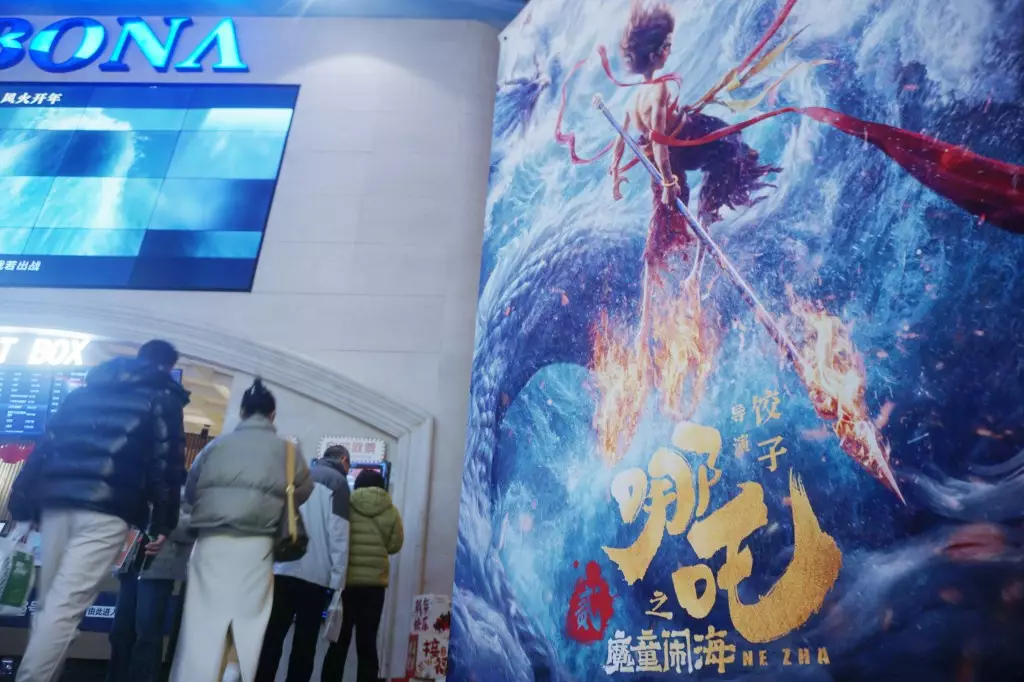China’s Spring Festival is a time of celebration and cultural significance, and the 2025 edition not only marked the Year of the Snake but also set new standards in the country’s cinematic landscape. This year’s festivities saw the box office soar to unprecedented heights, achieving a staggering total of RMB 9.51 billion (approximately $1.3 billion) from January 28 to February 4. This figure surpassed the previous record of RMB 8.02 billion, showcasing a remarkable recovery and growth in the film industry after a turbulent 2024.
The recent performance during the Spring Festival is remarkable not just in its own right but also in comparison to historical figures. Released on January 29, a single day saw the box office gross reach an extraordinary RMB 1.8 billion (about $247.5 million), establishing a new high for daily earnings in China. The momentum was sustained throughout the week, with daily earnings consistently exceeding RMB 1 billion ($137.5 million). This persistence in consumer spending reflects a reinvigorated public interest in cinema after a challenging year.
According to Maoyan, ticket sales also broke records, totaling 187 million during the festival period—highlighting a resurgence in moviegoing habits that had waned significantly during previous years. The growing number of attendees is indicative not only of the cultural importance of the Spring Festival but also the effective marketing strategies and releases that have captivated audiences.
At the forefront of this impressive box office performance is “Ne Zha 2,” which has grossed an astounding RMB 4.84 billion ($665.6 million) thus far. This animated feature, a sequel to the successful “Ne Zha,” has already claimed the record for the highest-grossing film during the Chinese New Year period in the nation’s history. Its popularity indicates a strong appetite for franchise films based on beloved characters and stories, reinforcing the idea that familiarity drives ticket sales.
Interestingly, projections suggest that “Ne Zha 2” could surpass RMB 8.7 billion ($1.2 billion) by the end of its run. It’s on track to become not only China’s biggest film ever but also the first to gross over $1 billion in a single market. Such milestones would elevate “Ne Zha 2” to a level previously held by global blockbusters, potentially changing the landscape of box office standards both domestically and internationally.
Following closely behind “Ne Zha 2” is “Detective Chinatown 1900,” which accumulated RMB 2.28 billion ($313.5 million). The success of these films is bolstered by a promotional campaign launched by the China Film Administration, which included a substantial subsidy program aimed at encouraging moviegoing. Such initiatives, combined with the release of sequels and adaptations of known intellectual properties (IPs), have clearly resonated with audiences.
Stanley Rosen, a professor at USC and an expert on Chinese film, articulated the importance of both familiarity and quality in driving this year’s festival success. All films released were part of established franchises, capitalizing on audience loyalty and previous cinematic experiences.
The high-performance level during the Spring Festival period might suggest a potential revitalization of the film industry, especially in light of a challenging 2024 that saw a 25% decline in box office revenues from 2023. While this surge may not signify an overall full recovery yet, it represents a positive trend towards increased cultural consumption in China, particularly among younger demographics who may feel economically disadvantaged.
The implications of this surge extend beyond merely domestic markets; the performance of Chinese films could have significant repercussions for Hollywood’s approach to the Chinese market. Following the successes of 2024, where two Hollywood films managed to claim spots in the top ten, the future remains hopeful yet uncertain, as studios navigate a complex relationship with Chinese audiences.
The Spring Festival 2025 not only shattered previous box office records but also indicated a shifting dynamic in viewer behavior and preferences. As the industry adapts to this burgeoning consumer appetite for compelling, franchise-driven narratives, the interplay between local and international cinema continues to evolve dramatically.

